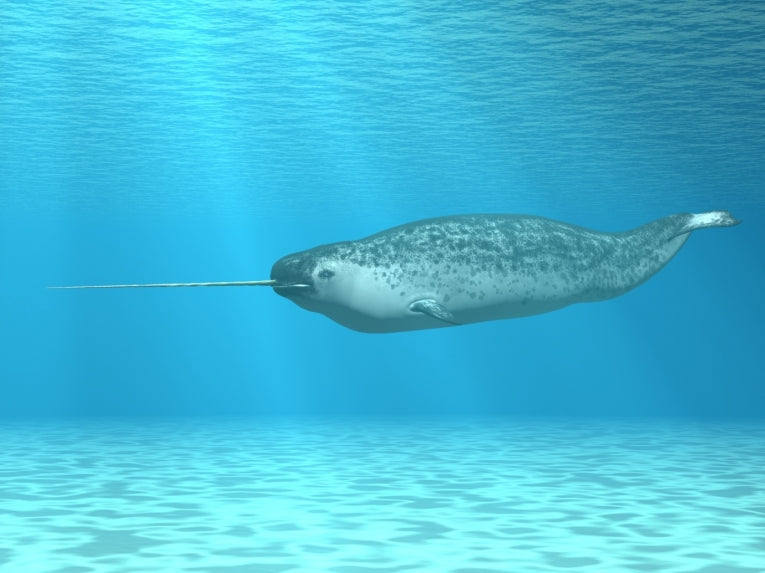Three or four million years ago, the whales had no humans to hunt them. Jorge Velez-Juarbe & Nicholas D. Pyenson, writing in the Journal of Vertebrate Palaeontology and basing their research on the specimen in the Smithsonian Museum, have now discovered a relative of beluga whales and narwhals that lived in warm oceans, as did a Californian fossil, Denebola brachycephala.
The single but complete fossil skull from a mine in Virginia is named Bohaskaia monodontiodes. As an odontocete (toothed) whale in the early Pliocene, it has a beluga-like face, but doesn't share the long incisor tooth of its cousin the narwhal, even though it was given its name (monodontiodes). Most of these whales seem to have located in the North American and North Sea areas, where many fragments of skull and other bits and pieces of fossil have been found.

This is the fossil skull of a fossil skull of a Bohaskaia monodontoides; Credit: Jorge Velez-Juarbe
This nomenclature could help to open up some of the mystery of why belugas and narwhals nowadays live only in the waters of the Arctic above the 10°C isotherm. These two species never follow the example of other whales and travel south. Reasons would include recent adaptation to the cold and the abundant crustacean and fish there, and conversely, the loss of characteristics that would enable hunting different prey organisms in warmer water.
Nicholas Pyenson says, "The fact is that living belugas and narwhals are found only in the Arctic and subarctic, yet the early fossil record of the monodontids extends well into temperate and tropical regions. For evidence of how and when the Arctic adaptations of belugas and narwhals arose we will have to look more recently in time." The change may be "related to oceanographic changes during or after the Pliocene affecting the marine food chain," says Dr. Velez-Juarbe "then competition or dietary preferences drove monodontids further north."

The beluga (meaning white) whale is very similar to the narwhal, except for the missing tooth. The authors are assuming that the new species closely resembles the beluga going by the similar skull anatomies, without the white coloration - Beluga whale via Shutterstock










